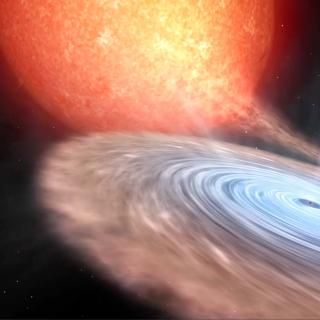Bibcode
Zhang, L.; Altamirano, D.; Cúneo, V. A.; Alabarta, K.; Enoto, T.; Homan, J.; Remillard, R. A.; Uttley, P.; Vincentelli, F. M.; Arzoumanian, Z.; Bult, P.; Gendreau, K. C.; Markwardt, C.; Sanna, A.; Strohmayer, T. E.; Steiner, J. F.; Basak, A.; Neilsen, J.; Tombesi, F.
Referencia bibliográfica
Monthly Notices of the Royal Astronomical Society
Fecha de publicación:
9
2020
Número de citas
53
Número de citas referidas
50
Descripción
We studied the outburst evolution and timing properties of the recently discovered X-ray transient MAXI J1348-630 as observed with NICER. We produced the fundamental diagrams commonly used to trace the spectral evolution, and power density spectra to study the fast X-ray variability. The main outburst evolution of MAXI J1348-630 is similar to that commonly observed in black hole transients. The source evolved from the hard state (HS), through hard- and soft-intermediate states, into the soft state in the outburst rise, and back to the HS in reverse during the outburst decay. At the end of the outburst, MAXI J1348-630 underwent two reflares with peak fluxes approximately one and two orders of magnitude fainter than the main outburst, respectively. During the reflares, the source remained in the HS only, without undergoing any state transitions, which is similar to the so-called 'failed outbursts'. Different types of quasi-periodic oscillations (QPOs) are observed at different phases of the outburst. Based on our spectral-timing results, we conclude that MAXI J1348-630 is a black hole candidate.
Proyectos relacionados

Agujeros negros, estrellas de neutrones, enanas blancas y su entorno local
Los agujeros negros y estrellas de neutrones en binarias de rayos-X son laboratorios únicos para explorar la física de estos objetos compactos. No solo permiten confirmar la existencia de agujeros negros de origen estelar a través de mediciones dinámicas de sus masas, sino que también permiten investigar el comportamiento de la materia y la
Montserrat
Armas Padilla